
By Mike Ford - NOAA National Marine Fisheries Service
April 28, 2015
During Océano Profundo, we saw a number of exciting gelatinous organisms. I’ve listed some of the most exciting ones below.
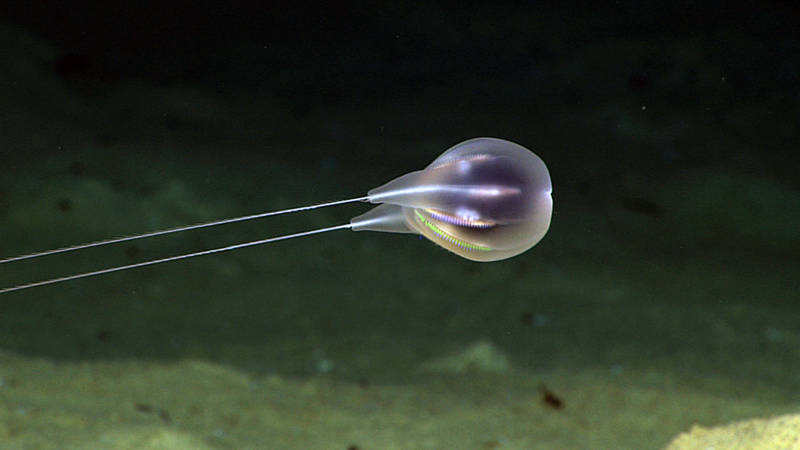
Three of these wonderful animals were seen near the bottom on Dive 1 at about 4,000 meters. Eight rows of ciliated combs along the bottom of the body and very long tentacles originating from thick tentacle sheaths make this an unusual find. A similar animal was seen on a remotely operated vehicle dive over the Mid-Atlantic Ridge in 2010. Image courtesy of the NOAA Office of Ocean Exploration and Research. Download larger version (jpg, 1.3 MB).
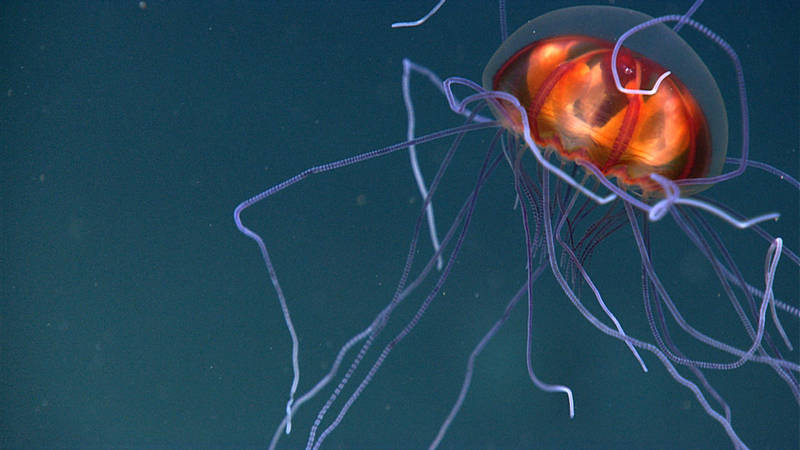
This beautiful hydromedusa was seen at about 3900 m during Dive 4. Clearly imaged are two sets of tentacles: an inner ring of short tentacles and a longer set of tentacles originating from the bottom edge of the bell. Red canals running from the edge of the bell to the top of the bell and uniquely shaped gonads suggest placing this medusa in the genus Crossota. Image courtesy of the NOAA Office of Ocean Exploration and Research. Download larger version (jpg, 1.7 MB).
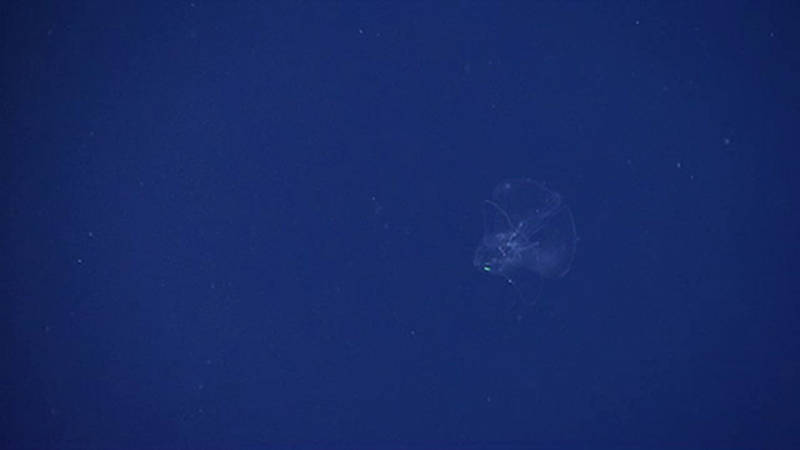
This delicate ctenophore almost always requires a remotely operated vehicle for proper observation. So delicate it usual breaks apart upon contact with traditional net sampling, this ctenophore is a lobate ctenophore. It contracts its lobes to push on the water and propel itself forward. These same lobes serve a prey capture function as well. Image courtesy of the NOAA Office of Ocean Exploration and Research. Download larger version (jpg, 10 KB).
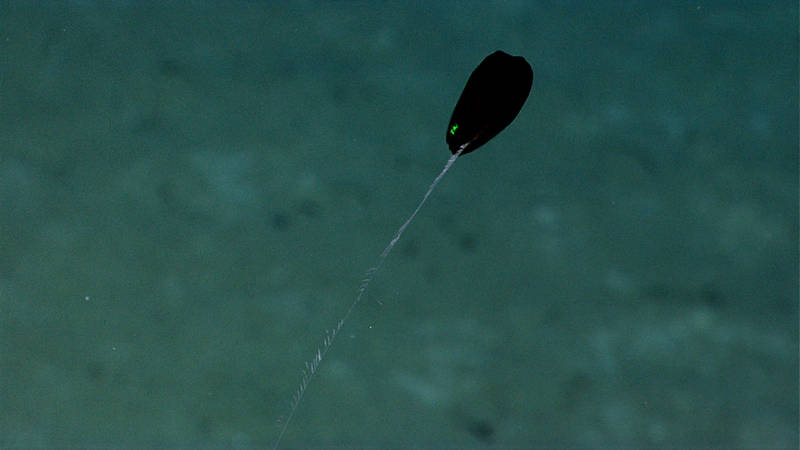
This ctenophore, seen during Dive 1, is characterized by its jet black pigmentation. This animal appears to be similar in form to species found closer to the coast; this one sets itself apart with pigmentation and a long tentacle. Only one tentacle is seen in this image, and it is not clear whether a second tentacle was lost. Image courtesy of the NOAA Office of Ocean Exploration and Research. Download larger version (jpg, 1.7 MB).
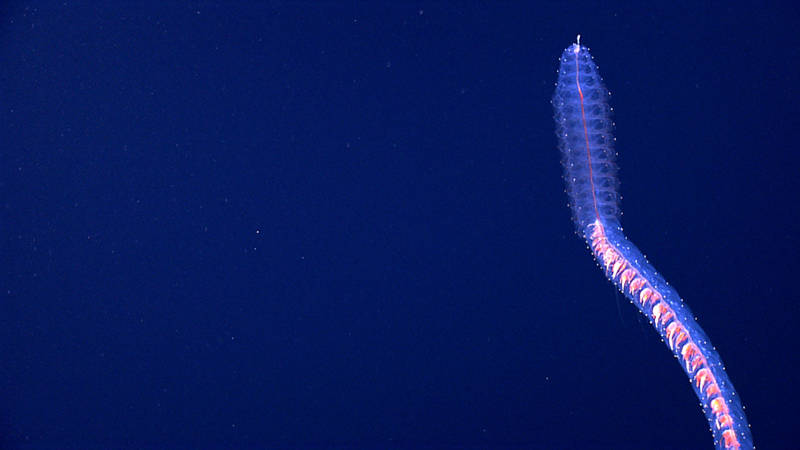
This long creature is a strange gelatinous animal and related to the bell-shaped medusa we have seen on this expedition. The bright spot on the tip is a buoyant pneumatophore. Each of the clear segments below that are actually individual animals highly modified only to pulse in support of motion. In this animal, each individual has a modified body that supports single function while being connected to a common stem. We saw several siphonophores of various lengths on this expedition. Siphonophores typical prey on small crustacean plankton and small fish. Image courtesy of the NOAA Office of Ocean Exploration and Research. Download larger version (jpg, 1.5 MB).
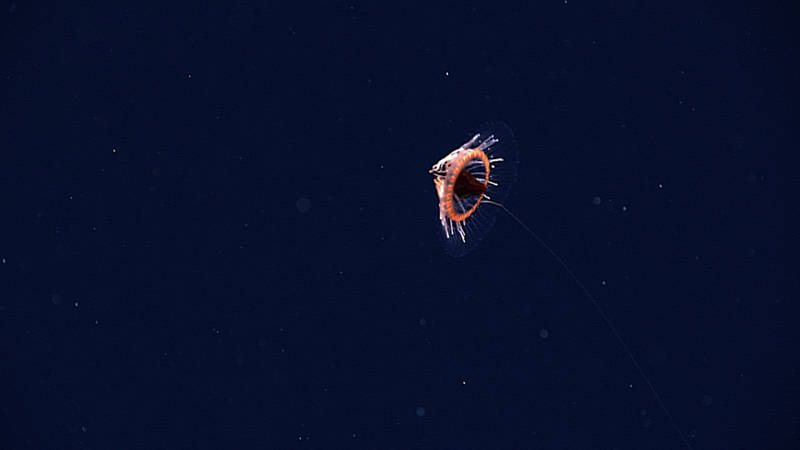
This animal was seen at the 800-meter transect on Dive 11. This coronate jellyfish had a single ‘hypertrophied’ tentacle extending behind the open bell. Image courtesy of the NOAA Office of Ocean Exploration and Research. Download larger version (jpg, 851 KB).